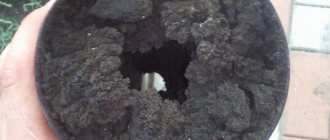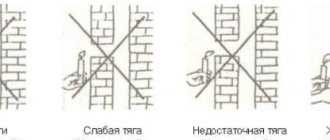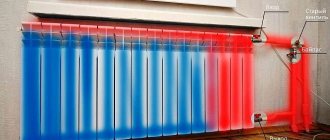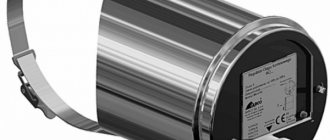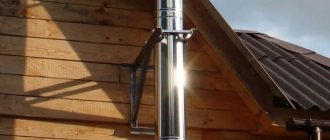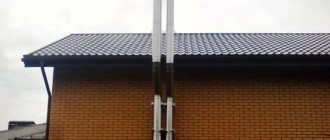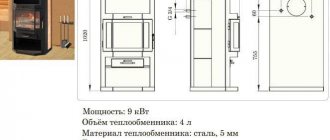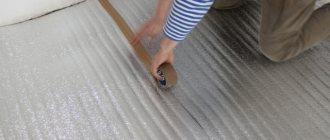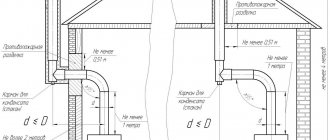Chimney lining is carried out in cases where the previously built brick chimney of a stove or fireplace began to lose its throughput, often becoming clogged with combustion products. At the same time, the draft is significantly reduced, due to which smoke periodically fills the rooms of the house, and the heating efficiency sharply decreases.
Chimney lining
There are several ways to solve this problem. But one of the most effective is to “ennoble” the internal surfaces of the brick walls of the chimney shaft with special liners. These sleeves have smooth internal surfaces, so that smoke does not encounter obstacles and does not linger in the channels. It smoothly “slides” along the smooth walls, coming out, while leaving virtually no fuel combustion products on the surface of the liner.
Features and design of the chimney
The design of a brick chimney coming from a fireplace, stove, solid fuel and gas boiler is a shaft that forms a straight channel or a channel with turns. The upper part of the structure is raised above the roof, and a protective cap is placed on top.
Principle of operation
When the boiler is burning, the temperature at the bottom of the duct is higher than at the outlet. Due to the difference, a pressure difference is formed. The higher this indicator, the better the traction. Combustion products are freely discharged to the street, and oxygen enters the firebox to support combustion.
Why do you need a chimney?
You can look at the photo of chimneys for a solid fuel boiler or traditional fireplaces with stoves. They are, in fact, very similar, because they have the same purpose - eliminating combustion products during operation of the heating boiler.
This happens due to the draft, which is created due to the difference in temperature and pressure of the air that is inside the heating boiler and outside.
In the winter season there should be no problems with this, and absolutely none, because the temperature outside will be very low, mostly sub-zero, but the temperature inside the boiler can in some places exceed 300 degrees Celsius.
In the case of gas boilers, we simply get air without oxygen - carbon dioxide, which we cannot breathe, but it becomes terrible only in high concentrations.
If in the case of gas the chimney is more of a ventilation duct, then in a solid fuel boiler there are many substances that exit through the chimney, outside the system and the house.
Holes in the chimney can pose not only an aesthetic threat, but also be really hazardous to health, because carbon monoxide and smoke flow through it, in fact.
Requirements for the exhaust duct
Good traction is maintained due to the tightness of the structure, as well as the condition of low soot accumulation and condensation formation. These parameters are the basic requirement for all chimneys. It is important to correctly calculate the cross-section so that there is no smoke inside the room.
Do it yourself or order it?
You can only make a brick chimney yourself or a structure from an insulated single-layer steel pipe. But laying smooth and beautiful walls of a brick pipe is more difficult than laying just a brick wall, and you must have the skills of an experienced mason. Single-layer pipes will have to be insulated; the quality of self-insulation is much worse than that of ready-made factory-made pipes.
You can independently install a chimney made of ceramics and sandwich pipes. It is impossible to manufacture elements of such chimneys on your own, but the industry produces many modules that allow you to assemble a pipeline of any design.
The question of whether to install a pipe yourself or hire a team of professionals is quite complicated. Installing a chimney is quite a complex job, and it is worth thinking about and carefully assessing your capabilities: is it possible to take prefabricated scaffolding or scaffolding of the appropriate height, will you have assistants, do you have the skills to install building structures, how do you react to height.
The essence of the sleeve and its advantages
Before you rush to reconstruct a chimney, you need to understand what lining is, as well as find out the advantages of the process.
Most chimneys have a rectangular channel cross-section. For masonry, ordinary red or decorative bricks are used. Over time, large soot build-ups appear inside the channels, efficiency decreases, and traction completely disappears. The problem lies precisely in the shape of the section, as well as the rough surface of the brick.
Round and oval canals have smooth inner walls. Soot does not cling to the walls.
In order not to build a new chimney, they came up with lining. The procedure involves inserting a pipe inside the channel without destroying the brickwork. The best option is a stainless steel sleeve, but ceramics, asbestos or polymer can be used.
Benefits of lining the chimney duct:
- traction is enhanced due to the smooth surface of the sleeve;
- heat losses are reduced, efficiency increases;
- no turbulence occurs inside the round channel;
- the service life of the channels increases due to the resistance of the sleeve to condensate;
- the tightness of the chimney improves.
The sleeve insert forms a new channel for the removal of combustion products, and the brickwork acts as a casing.
Troubleshooting a brick chimney ↑
While repairing steel chimneys is fairly quick and easy, repairing brick chimneys requires a more serious approach. It can be performed in several ways and largely depends on the reason that caused the problems. When the working element of the heat generator becomes cracked or collapses, the brickwork is repaired.
The main task of the master in this case is to restore the damaged area as efficiently as possible. To do this, it is necessary to disassemble the chimney to the point of damage and re-lay it using new brick. If the chimney design is done correctly, during its repair you will not have to dismantle the entire masonry. If mistakes were made during the installation of the gas and smoke exhaust system, it is easier to completely redo it.
Repair of brick chimneys can be carried out in several ways; the choice of a particular one largely depends on the reasons that caused the problem
When a brick shaft needs to be reworked, the chimney is lined. This repair method will help to avoid labor-intensive and dirty work, which will subsequently lead to the need to repair the roof and the entire room; it is used exclusively when problems arise with a straight chimney, without bends or displacements, and involves the installation of a ceramic or steel pipe of a certain diameter, corresponding to the needs of the heat generator. The result of chimney lining is improved draft, increased tightness of seams and joints, and prevention of soot formation on a smooth surface.
If you need to repair a chimney quickly and efficiently, it is best to resort to lining it. This method does not involve dismantling the masonry. It is based on finishing the chimney duct with special refractory compounds made from granite chips, cement and lime or perlite rocks, characterized by high adhesion to brick and concrete surfaces.
Lining chimneys using Mordax mass
The main features of chimney lining include:
- versatility: this method can be used both for repairing chimneys and ventilation ducts;
- improving draft and simplifying channel cleaning due to the formation of a smooth surface inside the chimney;
- resistance to temperature and atmospheric influences;
- minimal labor costs when performing repair work;
- increased fire safety and minimal risk of leakage of combustion products due to the solidity of the internal surface of the chimney;
- speed of the process (repairing a chimney this way will take a maximum of five hours);
The process of lining the chimney channel begins with preparatory work. It is first of all cleaned of soot, loose pieces and debris, then moistened with a special aqueous solution and a special composition is applied in three layers using a blowing brush wrapped in fabric, which is lowered into the chimney on a winch.
It is important not to forget that each subsequent layer must be applied after the previous one has completely dried.
Chimney lining with polymer liners
Another effective way to repair brick chimneys is to line them with polymer liners. Despite the fact that it has not yet managed to gain particular popularity, experienced craftsmen recommend resorting to it during the work. Lining of polymer liners involves installing special polymer liners developed using new technology into the chimney duct. They not only allow you to quickly restore the chimney, but also minimize the risk of its further destruction.
Repairing a chimney duct using this method is carried out as follows:
- the polymer liner is inflated with compressed air, then steam and mounted in the internal channel of the chimney;
- under the influence of pressure, the liner takes the shape of the chimney channel, fits tightly to the walls and hardens, as a result - a smooth and durable layer of polymer is formed inside the chimney without seams or cracks, resistant to precipitation and high temperatures, soot and condensation do not accumulate on it.
Maintenance of a chimney repaired in this way is quite simple and quick.
Is there a need for a sleeve?
It is better to install the sleeve during the construction phase of the building. The insert is bricked up as the shaft is laid out from brick. If you didn’t do this initially, you will have to return to the process over time. Cladding a completed house is more difficult. We will have to partially destroy the masonry, break the decorative cladding and restore everything again.
The urgent need for lining brick chimneys is caused by the following reasons:
- Initially, the combustion product removal system was designed and built with errors;
- constant use of a fireplace or stove connected to a brick chimney is assumed;
- long channel length;
- if according to the project the mine should be lined, but this was not done;
- the shaft passes through a cold attic and due to the temperature difference, condensation forms;
- the chimney is made of brick inside the outer wall of the building;
- condensation streaks appear from the seams of the brickwork of the shaft;
- depressurization of the smoke channel;
- the shaft quickly becomes clogged with soot and requires frequent cleaning;
- The smoke exhaust passages were laid not by professional stove makers, but by inexperienced masons.
In all other cases, the owner performs the sleeve at his own request.
Stage 3. Head construction
After the main installation work on lining the chimney with your own hands, we proceed to the design of the mouth of the lined chimney. This process requires adherence to the following rules:
- The sleeve/case insert must rise above the smoke shaft;
- A cover plate should be installed around the sleeve that protrudes (if there is none, a tile is made of metal or of cement-sand mortar with a slope away from the pipe itself);
- It is necessary to install a cuff near the pipe to prevent moisture from getting between the pipe and the shaft. Or arrange a mortar ledge with a gap for expansions;
- The direction of the pipe mouth is vertical, cut is horizontal;
- The protruding part above the roof and in the attic must be thermally insulated;
- It is advisable to install an umbrella that will prevent precipitation from entering the pipe (which is especially important when the condensate drain is not connected to the sewer);
- To increase the height of the pipe and further design it, it is better to use sandwich pipes with factory-made parts;
- Thermal insulation of sleeves should not be carried out with bulk materials, this is not permissible;
- To make ventilation channels, a cuff with a cone is used, or vents are made in the surfaces of the shaft (side), below the cover plate.
Three common sleeving methods and materials used
The main essence of the sleeve is the insertion of the liner inside the brick shaft. Sleeves differ in material, size, and shape. The basic principle of installation is the same, but there are nuances.
Stainless steel
The sleeves are characterized by a long service life, resistance to high temperatures and condensation. Stainless steel pipes are suitable for shafts of any length and shape.
Stainless steel liners differ in design:
- Round pipes are produced with a cross-section from 6 to 100 cm. The wall thickness depends on the metal used and ranges from 0.5–1.5 mm.
- Rectangular pipes are used less frequently. When required, inserts with a wall size of 14×27 cm are used.
- Oval pipes are made of stainless steel with a thickness of 0.5–0.6 mm. Running sizes are 20×10 and 24×12 cm. The cross-section approximately corresponds to a round pipe with a diameter of 15 and 20 cm.
- Corrugated hoses are made in two layers from different grades of stainless steel. The cross-section varies from 8 to 35 cm. When installing a flexible stainless steel chimney, do not bend the corrugation with a radius less than two pipe diameters.
Of all the options, the corrugated sleeve is considered the most unreliable. Two-layer stainless steel burns out in four years from exposure to high temperatures, and soot lingers on the ribbed walls.
Polymer sleeve
The sleeve is made of fiberglass mesh impregnated with polymer resin. A one-piece hose is inserted into the shaft without the use of connecting segments. If necessary, use shaped parts. Maximum sleeve length – 60 m. Thickness – from 8 to 50 cm. Service life – up to 30 years. For high-temperature and low-temperature boilers, hoses with different compositions are used.
FuranFlex polymer systems for gas boilers, fireplaces and stoves are popular in Russia.
FiTFiRE liners are used for low-temperature boilers. FiTFiRE HT 1000 is suitable for fireplaces and stoves.
Sleeve sleeve allows you to get a solid channel without dismantling the brickwork of the shaft. The liner is resistant to condensation and is capable of bending at turns at an angle of 300. Disadvantages include high cost, as well as the impossibility of independently installing a smoke exhaust duct without skills and special equipment.
Ceramics
Ceramic liners are considered reliable and durable. For lining, they are more often used when restoring destroyed mines. Elements are available in round and rectangular shapes. The connection takes place using a socket or tongue-and-groove lock. The diameter of the sleeves is from 12 to 45 cm. Straight pieces of pipe are produced in lengths of 33, 66 and 133 cm. Wall thickness varies from 4 to 20 mm.
Ceramics are not afraid of soot fire. The downside is the high cost and weight. Installation is not complete without dismantling the chimney shaft.
Types of lining
Sandwich pipe lining
The principle of behavior of lined liners and their placement in the channel is the same, but the liners differ in material, so there are certain nuances for each type.
Specialized stores offer inserts:
- made of polymers;
- of steel;
- from corrugated pipe;
- polymer sleeve;
- made of stainless steel.
Polymer sleeves
A plastic pipe is installed inside the operated chimney. PVC products are reinforced with fiberglass fabric and, when heated, acquire plasticity. As a result of this property, irregularities and spaces on the clinker surface are filled. After hardening, the internal area becomes smooth, and the wall has a thickness of 2 cm.
The downside of the application is the temperature limitation. Lining a chimney made of brick with plastic is done with exhaust flows up to +250°C, so they are installed to work with low-power units.
Application of steel elements
Corrugated pipe lining
A structure made of a rolled pipe is placed in the straight section of the chimney, or rectangular, square, oval and round shapes are made with your own hands. Sheets are taken with a thickness of 0.5 to 1.5 mm. In channels made of steel materials, it is possible to provide the required modules for cleaning, inspection, and containers for accumulating condensate in accordance with the standards.
Steel products are used for fireplaces using various types of fuel. The material resists acids and is not subject to plaque deposits. The disadvantage is that only straight sections can be lined with this method; winding pipelines cannot be equipped.
Using corrugated pipe
Manufactured using various types of stainless steel, the pipe shells are made of two layers. The positive thing is that flexible liners are used for complex channels with turns. The products do not require connecting elements. Double-layer inserts significantly reduce the diameter of the air duct; this must be remembered when choosing.
Polymer sleeve
Polymer sleeve for chimney lining
The sleeve is made of copolymer resin and reinforced with fiberglass. The insert is used to combat condensate drops; it is used to treat low-temperature chimneys and those coming from powerful boilers.
Types of polymer products:
- Fitfire is a liner containing two layers, the maximum element has a length of 60 m. After installation, the chimney duct has a diameter of 80 - 500 mm. The manufacturer specifies a service life of 50 years; the hose is used to remove low-heat gases.
- Fitfire HT 1000 is used in pipelines of sauna and fireplace hearths with high smoke heating. The sleeve consists of three layers, the middle one is a reinforcing mesh.
When lining the chimney with a polymer sleeve, the internal protection is obtained without seams, with a smooth surface.
Stainless steel pipe
The material is one of the most popular types. The products work for many years and do not deform due to high temperatures or corrosion. Lining a brick chimney with a stainless pipe is often used because... There is a large assortment of ready-made inserts for sale, sometimes products are made by hand, taking into account the dimensions.
The inserts are made from stainless steel sheets with a thickness of 0.8 - 1.5 mm. To connect and turn the channel, standard tees and pipes are used, but to install them you need to know the exact layout of the chimneys. Sleeves with a rectangular cross-section are installed only on straight sections of chimneys.
Features of installation of liners made of different materials
In modern construction, stainless steel, ceramics or a polymer sleeve are used to reconstruct the chimney. Ceramic liner and polymer are difficult to install. Most often, when lining chimneys with your own hands, stainless steel is used.
Preparatory work
Regardless of the type of liner chosen, a number of preparatory measures are performed before starting liner:
- Using a powerful flashlight, they inspect the smoke shaft from the inside. The degree of destruction, soot contamination, the presence of fallen pieces of mortar, bricks, and bird nests are determined.
- Use metal scrapers, brushes and other devices to clean the chimney. Bricks protruding from the masonry will prevent insertion of the liner. They try to knock down all the protrusions with a hammer or pry bar.
- Measure the length as well as the diameter of the chimney. The dimensions are transferred to the diagram, indicating all rotations and degrees of angles.
- The part of the chimney adjacent to the boiler or stove is dismantled. The installation of the shaped element will begin from this place.
- The bottom of the smoke shaft is cleared of debris and leveled if necessary.
After the preparatory measures have been carried out, the inserts necessary for the sleeve are purchased.
Installation of a stainless steel liner of round, rectangular or oval cross-section
Sleeving a small shaft with stainless steel without turning is carried out according to the following principle:
- All elements of the sleeve are assembled into one structure. The joints are treated with heat-resistant sealant, and the top is wrapped with aluminum-based adhesive tape.
- Two belts, cables or strong rope are secured to the bottom of the pipe with a clamp.
- The sleeve is carefully lowered down the shaft until it touches the bottom. If the length of the chimney is short, a lightweight stainless steel pipe is immersed by hand without using cables.
- The liner from below is connected to the inlet of the boiler or furnace and a condensate collector is installed. The sleeve is removed from the street above the brickwork of the chimney, and a protective cap is put on top.
Stainless steel lining of a long chimney with turns is carried out differently:
- The smoke duct is dismantled at the entrance to the boiler, as well as all areas where shaped connectors will be installed.
- First, the lower part of the sleeve is assembled from flat sections of the pipe up to the first shaped connector. The liner is lowered to the bottom of the shaft, connected to the inlet of the boiler or furnace, and a condensate collector is installed below.
- A shaped connector is installed on the second free end of the steel sleeve. A flat section of stainless steel is connected to it until the next turn of the shaft. The procedure is repeated until the sleeve is removed from the shaft.
The area where the pipes join is similarly reinforced with heat-resistant sealant and wrapped with aluminum tape. A head is installed on top.
Installation of corrugated stainless steel hose
The lining of a flue with a corrugated stainless steel is carried out in a similar way. The difference is the arrangement of the lower and upper exits from the mine. After installing the flexible hose inside the smoke channel, a rigid transition made of stainless pipe is attached from below. This section is used to connect the hose to the inlet of the boiler or furnace. A condensate collector is installed below.
At the upper exit from the smoke channel, the corrugation is placed above the masonry about 30 cm. To securely fasten the head, the exit can be made by extending a rigid section of stainless pipe. Upon completion of the lining, the brickwork of the chimney duct is restored.
Installation of ceramic liner
Lining with ceramic liners is more difficult. The process consists of the following steps:
- A roller mechanism is fixed to the holes of the condensate collector. The element in the sleeve is a load-bearing structure, and the first one descends into the chimney to a depth of 30 cm. Ceramics are heavy. For a safe descent, it is best to use a winch.
- The upper end of the condensate collector is treated with sealant. Using a socket or tongue-and-groove lock, a flat section of the pipe is secured.
- To connect the boiler, a hole is cut out on a flat ceramic sleeve using a universal fitting. A winch is used to lower part of the liner into the shaft. The next element is fixed to the end of the first pipe in a similar way. During descent, make sure that the sleeve with the hole for the fitting does not turn in the other direction relative to the boiler inlet.
When the condensate collector reaches the bottom of the shaft, it is connected to the boiler inlet. From above, a ceramic pipe is installed above the brickwork. The protrusion is made equal to the height of the cover plate.
Installation of a polymer sleeve
To line chimneys with a polymer sleeve, special equipment will be required. Initially, the liner resembles a coiled hose. The hose is lifted to the roof of the building, inserted through a channel to the bottom of the shaft, connected to a compressor and air is supplied. Under pressure, the soft walls of the stocking will straighten out.
When the hose takes on the internal shape of a channel, steam is supplied instead of compressed air. The polymer first softens and then hardens. A condensate collector is installed from below. At the exit from the shaft, the excess piece of the sleeve is cut off, and a head is installed on top.
Head device
To install the head, a rigid sleeve is built onto the surface of the chimney, and a cover plate is mounted around it. A cuff is attached near the pipe to prevent condensation from entering the brick shaft. The part of the sleeve protruding above the roof of the house is insulated with insulation. The height of the pipe should extend beyond the level of the ridge.
Common mistakes
When lining with any type of liner, you must not allow the sections to narrow, use a shaped turn for support, or pour loose insulation into the gaps between the liner and the walls of the shaft.
It is not allowed to drain condensate into the sewer through a hose without installing a U-shaped water seal.
Labor will be useless if the shaft is partially lined, as well as if there are steep angles.
Benefits of rehabilitation
The chimney duct rehabilitation process has undeniable advantages:
- the smooth inner surface of the chimney weakly retains soot;
- the thermal conductivity of the shaft decreases, due to which the pressure difference is maintained;
- the walls of the sleeve made of any material do not absorb condensate;
- a compensator is added to assemble and drain condensate from the channel.
It is always easier to replace a failed liner than to rebuild a brick shaft.
Key mistakes when lining
The main mistakes include:
- Partial liner (not along the full length of the shaft).
- Using a knee instead of a special support element.
- Crumpling of the edges of pipes (if we are talking about stainless steel) during transportation, connection (of segments to each other) or lowering into the shaft.
- Jerks of the cable when lowering the sleeve.
- Narrowing of diameter.
- Too sharp turns (if we are talking about a polymer liner).
- Use of bulk thermal insulation (between the sleeve and the brick shaft).
- The absence of a U-shaped water seal - if the condensate is discharged directly through the hose into the sewer.
Please note: every mistake is quite serious. If you allow them, you can complicate your task in the future (if you need to replace the liner), or worsen the operation of the boiler.
What is a spark arrester, why is it needed on a chimney, and how to make it?
How to make a chimney in a garage: rules and instructions
Related Posts
Approximate cost of work
The cost of rehabilitation depends on the materials and design of the future chimney liner. For installation of a 1 m long liner you will have to pay approximately 2.5 thousand rubles. After measuring the length of the shaft and multiplying the results by the cost of the selected liner, you can roughly calculate the cost of rehabilitation.
We hope that the information provided will help you choose the appropriate sleeve method and complete all the work yourself. We invite you to subscribe to other useful articles. Share information on social networks. Maybe some person is similarly looking for ways to solve a similar problem.
(
1 ratings, average: 5.00 out of 5)
General description: what is Furanflex?
To understand what Furanflex is, let's start from the very beginning. A chimney is a duct (pipe) that runs from a stove, fireplace or boiler through all of these to the top and out through the roof. Very often the chimney duct is made of brick.
A sleeve (sleeving) is an insertion of a pipe made of a different material into a brick chimney. At the exit we have a pipe in a pipe, and in this case the smoke will not come into contact with the brickwork, but with an additional pipe placed (a sleeve, which is usually made of ceramics, steel and a polymer sleeve).
Pipe lining with Furanflex
A correctly installed sleeve protects the chimney channel from fouling with soot, and also protects from condensation and exposure to high temperatures. As a result, the service life of the channel is significantly extended, and the likelihood of its breakdowns and blockages is reduced.
During installation, it is unwound, lowered into the chimney channel, straightened along the entire length and secured at the top (at the pipe outlet) and at the bottom (at the place of attachment to the stove). Next, a plug is placed on the hose from below (it is blocked), and a special installation is connected from above, through which hot steam is supplied to the hose.
Under steam pressure, the hose expands along its entire length, pressing against the walls of the air duct. Under the influence of temperatures, the sleeve becomes elastic and is then glued to the brickwork, at which point the installation process ends. At the same time, both fireplace and stove chimneys can be lined in this way.
Where and what is it used for?
Furanflex is used for lining, that is, to protect the main chimney channel. Moreover, even if the protective liner fails, replacing it is both cheaper and easier than replacing the main chimney duct.
The use of Furanflex is justified in the following cases:
- To protect the smoke channel during its construction.
- To protect an existing smoke channel.
- To restore a smoke duct that has become unusable (and it usually doesn’t matter what exact reason led to the failure of the smoke duct).
Typically, lining in this way is used for lining chimneys located in low-rise private buildings. Somewhat less often - for channels located in baths or saunas. But there is no prohibition on the use of this technique for chimneys in industrial systems.
Material and characteristics
The Furanflex protective sleeve consists of several structural elements (layers or segments), so it makes sense to consider them all.
Sleeve segments:
- internal segment - made of thermoplastic polyethylene, used exclusively at the installation stage and used to hold the middle layer (segment) - after installation it is immediately removed from the channel;
- middle segment - made of thermosetting polymer resin using fiberglass (330 g per square meter), and there are usually several layers of fiberglass (about four);
- outer segment - made of polyester fabric (if we are talking about Furanflex Black or Ventiflex), or from fiberglass with Kevlar reinforcement (if we are talking about Furanflex RVW).
General information about Furanflex material
Product Specifications:
- Basic length: up to 30 meters.
- Basic sleeve diameter: from 60 to 1000 millimeters.
- Wall thickness: from 2 to 3 millimeters.
- Tensile strength: exceeds 400 N/mm.
- Maximum smoke temperature (with prolonged exposure): up to +250 degrees (if we are talking about Furanflex Black), or up to +700 degrees (if we are talking about Furanflex RVW). One-time short-term temperature rises up to +500 for the Black model and up to +1000 for the RVW model are allowed.
- Maximum channel bend angle: 45 degrees.
- Minimum ambient temperature: no more than -50 degrees.
- Service life: from 10 to 30 years with proper installation and subsequent operation.
Briefly about the manufacturer
The Furanflex company is based in the Russian Federation, and its products are aimed specifically at the CIS market. The company has a representative office in Ukraine.
Considering that the described products are rare in the construction market of the CIS countries and the choice of them is small, the Furanflex company can be called a fairly large manufacturing company of such devices. This is the largest manufacturer of chimney hoses and the most popular in Ukraine, Russia and Belarus.
Heat-resistant adhesive for sealing: scope of application, characteristics
This type of insulation is suitable for working with external walls of a fireplace, stove, as well as for processing the junction of brickwork and roofing.
Heat-resistant sealant is made from silicone. The temperature range at which a product can be used is affected by the additional components present in the product and their percentages. The most common additional component is iron oxide, which gives the insulation a brown tint.
The main characteristics of this type are as follows:
- high elasticity of the thermosealant: due to its resistance to deformation, silicone can be used for insulation on pipe sections of rather complex shape. It will easily cope with the task and will not crack under the influence of temperature;
- the average temperature range of heat-resistant silicone ranges from +250°C to +320°C;
- resistance to ultraviolet radiation: insulation can be used to seal external structural elements;
- silicone does not allow moisture to pass through, which also makes it convenient for outdoor use. Rain and snow are not scary for him;
- high adhesion allows the silicone composition to adhere perfectly to a variety of types of surfaces: brick, metal or ceramics.
Silicone has few disadvantages, but they still exist:
- due to its low heat resistance, it is not suitable for sealing internal surfaces that directly interact with fire;
- Since the material is elastic, it cannot be painted. The paint will not remain on its surface for a long time.
How to liner using Furanflex: step-by-step process
Theoretically, independent installation of such systems is possible, but this requires expensive equipment, strict adherence to instructions and technical knowledge in such work. Therefore, it is better to entrust such work to professionals, although it will not be cheap.
The step-by-step lining process looks like this (usually all work is carried out in dry and not frosty weather):
- The first step is to calculate the required sleeve length. The calculation is made as follows: the total height of the chimney channel + 2 meters.
- Next, the chimney is inspected to identify areas of unevenness, protruding areas or various damages.
- If problems are detected, they are eliminated; without this, lining cannot be carried out under any circumstances.
- After all the preparatory work, the rolled up hose and equipment for its subsequent installation (including a compressor and steam generator) are delivered to the site. Aerial platform for rent.
- The installation process begins with dismantling the masonry in the lower segment of the smoke channel.
- A worker on an aerial platform climbs to the chimney segment on the roof and dismantles the chimney/deflector (if present).
- A steel mounting element is fixed to the upper segment of the smoke channel.
- The roll is untwisted and the sleeve is gradually lowered down the smoke channel.
- In the lower segment, a compressor and a steam generator are connected using a steel mounting element.
- With the help of equipment, hot steam is pumped into the liner, which subsequently straightens the stocking, after which it “swells” exactly according to the shape of the shaft.
- The heated pipe is polymerized; it usually takes from two to six hours.
- The excess parts of the stocking along the lower and upper parts are simply cut off, and a tee and a condensate drain are placed at the bottom.
- The entire process of work is completed by sealing various “leaks” in the upper segment of the smoke channel.
Service price
The cost is calculated individually based on the length of the pipe and the type of material used to make the inner liner. By consulting with our specialists, you can find out how much cladding will cost for your home. You can be sure that it will cost much less than installing a new pipe.
The ideal condition of the smoke exhaust channels is not only a mandatory requirement that must be met for the legal operation of heating equipment. This is a matter of safety for people in the premises. According to statistics, carbon monoxide poisoning occurs quite often during the heating season. This substance has no odor, so people do not notice the problem and quite often end up in the hospital in serious condition. If there are children in the house, then poor draft in the chimney can be fatal.
Specialists from Ventgazservice LLC will restore the patency of smoke channels using special inserts. This will provide good traction and prevent the rapid accumulation of soot. Our priorities are compliance with industry standards and safety.
System calculation rules
The purpose of their implementation is to select the optimal height and cross-section of the gas exhaust channel to ensure effective traction. The last characteristic is very important. If possible, it is best to have professional calculations done. If not, you can use averages. There are three main sizes that are widely used:
- Six. This is a square-shaped pipe having a row of six blocks. The dimensions of the internal channel are 250x250 mm. Used for Russian stoves and fireplaces, where minimal resistance to the flow of heated gases is required.
- Five. The chimney with a rectangular cross-section is formed by five elements. Section 125x250 mm. It is used for heating and cooking-heating devices.
- Four. A structure made of four bricks in a row. Size - 125x125 mm. Installed for low-power solid fuel boilers and kitchen stoves.
When choosing the height of a future structure, the following standards should be taken into account:
- If the roof covering is fire hazardous, the structure is placed at least 150 cm above it. For non-flammable materials, this value is 50 cm.
- The minimum distance between the grate head and the grate is 500 cm.
- When constructing a chimney on a ridge or at a distance of no more than 150 cm from it, the height of the part is 50 cm above the roof level.
- When installing a structure at a distance of 150 to 300 cm from the ridge part, its length is equal to the height of the ridge.
- If the structure is further than 300 cm from the ridge, it is allowed to be built below it. But the line drawn conditionally through the ridge and deflector should have a slope of 10°.
